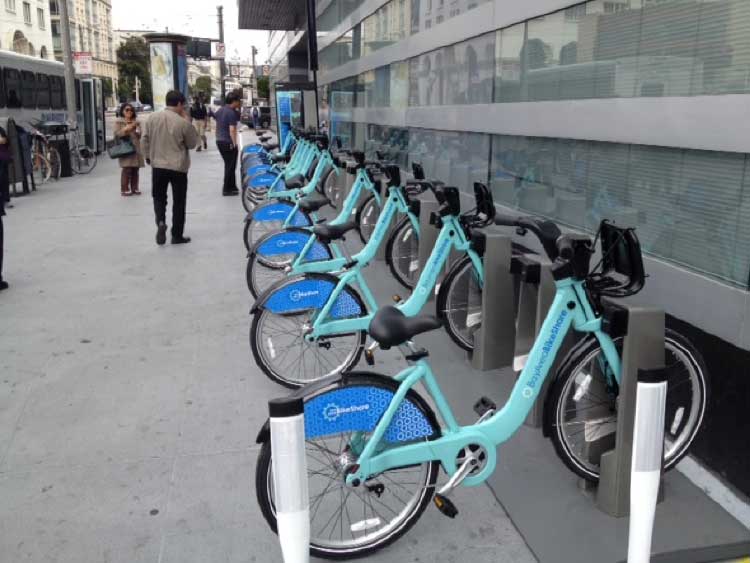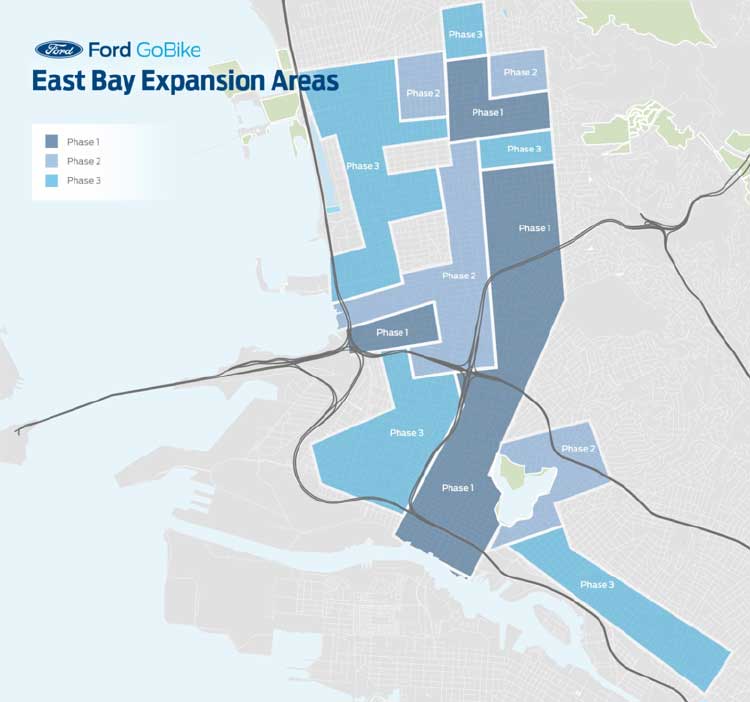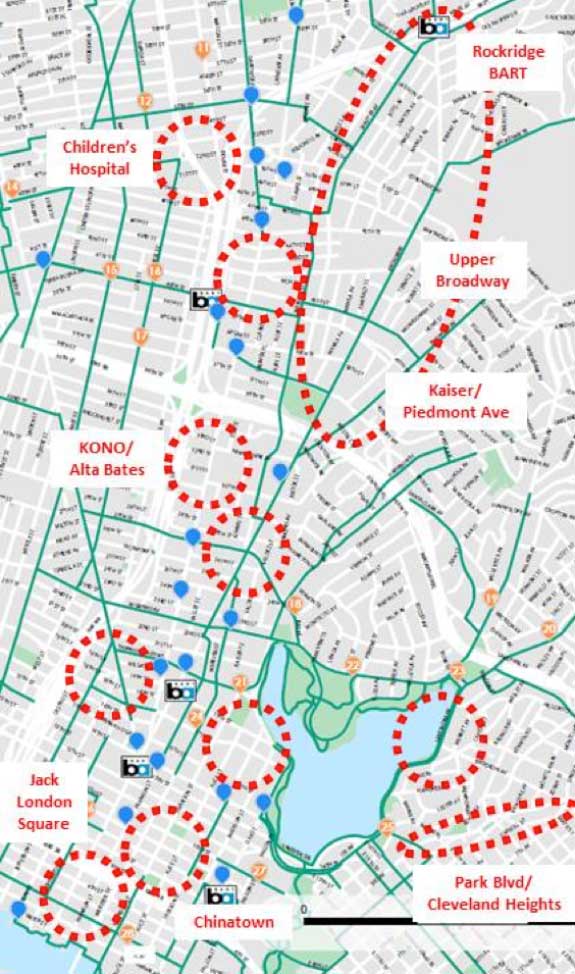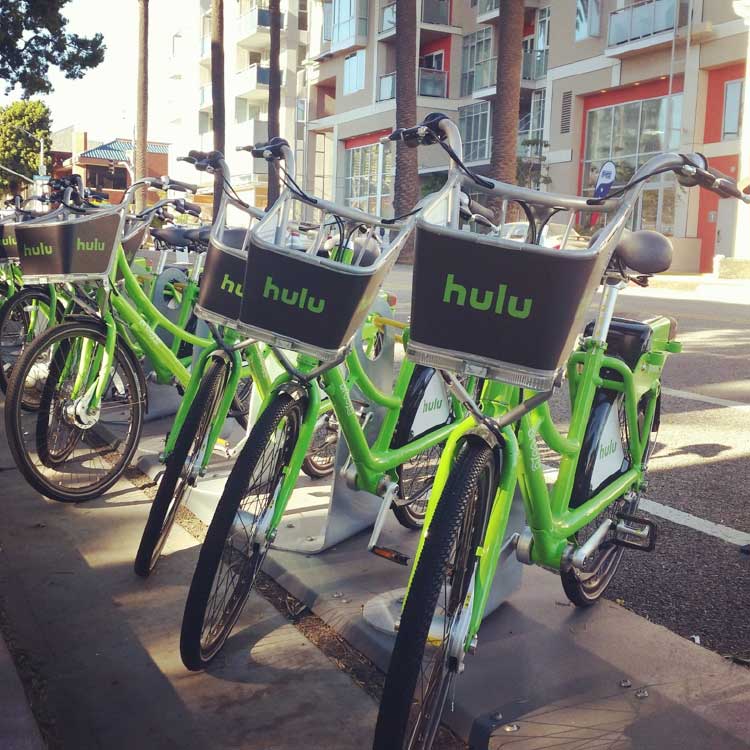After several years of anticipation, the expansion of Bay Area Bike Share (recently rebranded as Ford GoBike) from 700 to 7,000 bikes will finally commence Spring 2017. Expansion will cover five cites (San Francisco, Oakland, Berkeley, Emeryville, and San Jose) and will occur in three phases over the next two years. While Bay Area Bike Share has played a limited role in the Bay Area’s transportation system since its launch in 2013 – serving about 1,000 trips a day – the hope is that the tenfold expansion will create a critical mass of service that attracts ridership akin to New York City’s Citibike or Washington D.C.’s Capital Bike Share. However, Bay Area Bike Share’s approach in siting stations in the East Bay suggests that performance expectations may need to be tempered due to lack of station density.
Successful bike share systems depend on the density and accessibility of their stations relative to destinations and activity centers. According to the Institute for Transportation Development and Policy (ITDP), station densities of about 26-42 per square mile located about 1,000 feet apart are considered international best practice (somewhat similar to the spacing of bus stops). Lower station densities are typically associated with lower ridership – people are less likely to walk longer distances to ride bike share, and riders are inconvenienced by diverting several blocks from their destination to reach the nearest station.
The proposed station locations for phases I and II in the East Bay fall well short of best practices for station density. Bay Area Bike Share will provide about 12 stations per square mile in Downtown Oakland, and single digits elsewhere in other parts of Oakland and Berkeley. These low station densities could jeopardize the attractiveness of the system to the public and the usefulness of the system to members (current membership fees are $88 per year and likely to increase post-expansion).
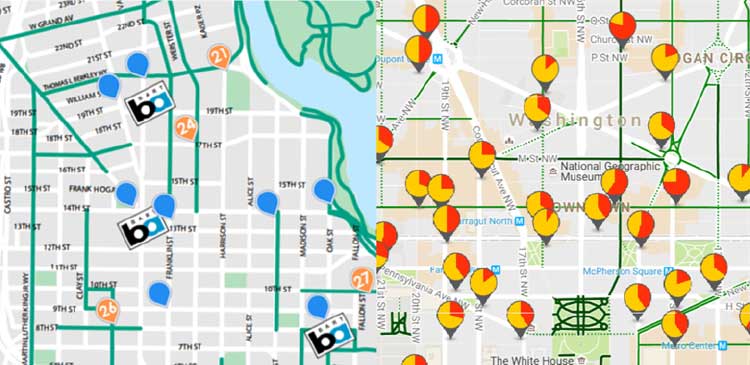
One square mile of proposed Bay Area Bike Share stations in Downtown Oakland (left) versus Capital Bike Share stations in Downtown Washington D.C. (right)
The reasoning behind these station planning decisions appears to be both political and financial. Bay Area Bike Share has a limited amount of resources available for new stations, and bike share, like transit, is subject to tradeoffs between ridership and coverage in allocating these resources. Rather than focusing on the highest demand areas, Bay Area Bike Share will spread service more evenly between cities, neighborhoods and council districts so that more areas get a piece of the pie regardless of demand. However, the coverage approach may dilute service such that it’s useful for only a limited number of trips – many dense activity centers that would merit significant service will instead have little or none. In Oakland, notable gaps within the Phase I and II service areas will include Jack London Square, Chinatown, Park Blvd/Cleveland Heights, Kaiser, Alta Bates, Children’s Hospital, Upper Broadway, and Rockridge. While future phases could serve these higher demand infill areas, the desire for more coverage is likely to present challenges to achieving optimal station densities.
Recognizing the tradeoffs between ridership and coverage, some cities have taken a different approach to bike share planning, adopting systems with smart bikes instead of smart docks. Smart bikes can be parked anywhere, both at bike share hubs and at standard bike racks. While smart dock systems like Bay Area Bike Share provide predictability and are more adept at serving higher demand, smart bikes can provide flexibility and better coverage for moderate demand areas. Major systems in Portland and Santa Monica, along with smaller systems in San Mateo and Palo Alto are implementing smart bike systems to address less highly concentrated demand. Neither system is perfect; unfortunately, neither is compatible either, since the technology, manufacturers, and operators are generally different.
Hopefully Bay Area Bike Share can achieve a more robust East Bay bike share network in future phases, and the success of the program is not at risk due to short-sighted decisions. The East Bay deserves a robust and convenient bike share network that meets the needs of both higher-density and moderate density areas. Unfortunately, as currently conceived, it’s unclear if Bay Area Bike Share will be able to deliver.

